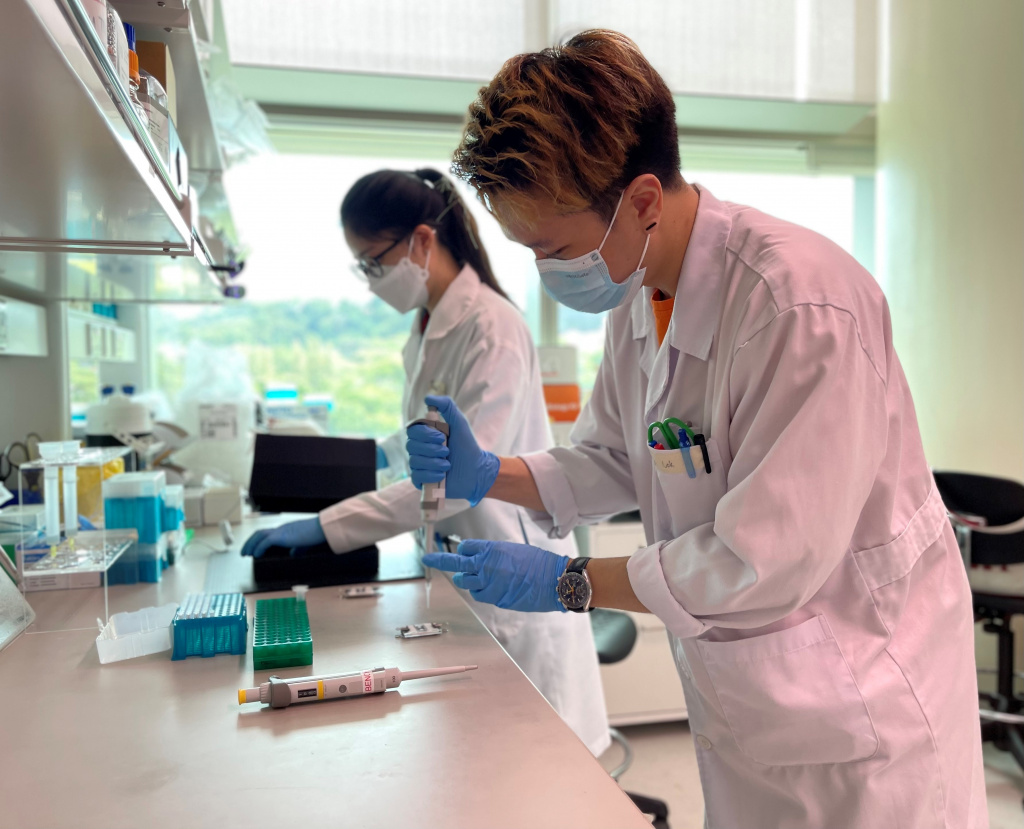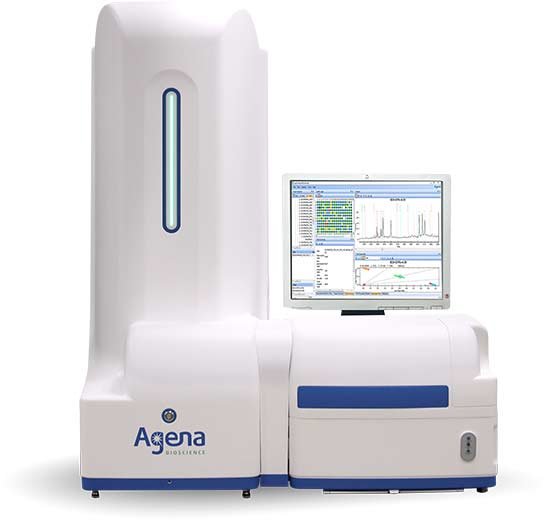Newly-Developed Paper-Based Blood Test Detects COVID-19 Immunity within 10 Minutes
|
By LabMedica International staff writers Posted on 22 Nov 2021 |

A newly developed paper-based blood test can determine the presence of SARS-CoV-2 neutralizing antibodies within 10 minutes.
Researchers at Singapore-MIT Alliance for Research and Technology (SMART; Singapore) have successfully developed the new rapid point-of-care test for the detection of SARS-CoV-2 neutralizing antibodies (NAbs). This simple test, only requiring a drop of blood from a fingertip, can be performed within 10 minutes without the need for a laboratory or specially trained personnel. Current NAb tests are laboratory-based, require additional equipment and trained personnel, and have a processing time of 2 to 4 days.
Despite the availability of various COVID-19 diagnostic tests, the detection of SARs-CoV-2 NAbs is still generally conducted at hospitals and specialized diagnostic laboratories. Currently, NAbs are commonly detected using virus neutralization tests (VNTs), which require handling of live virus, a facility with rigorous biosafety and containment precautions, skilled personnel and 2 to 4 days of processing time. Thus, these tests are not viable for large population testing and surveillance due to the lengthy process that may put a strain on existing laboratory capabilities. The development of a more efficient means of testing better allows for immediate point-of-care testing and mass monitoring for events or workplaces, specific localities, high traffic points, and critical points of entry such as immigration checkpoints.
According to the researchers, the newly developed rapid cellulose pull-down viral neutralization test (cpVNT) detects SARS-CoV-2 NAbs in plasma samples within 10 minutes, utilizing a vertical flow paper-based assay format and protein engineering technology. This same protein engineering technology has also been used to develop tests to detect other well-known viruses such as the Zika virus and Tuberculosis. Cellulose was adopted as a test material as it is cost-effective and easily manufactured, and to avoid reliance on nitrocellulose, which is in high demand due to its use in other rapid COVID-19 tests.
The developed test is simple to administer, non-invasive and offers quick results. To perform the test, a user mixes a drop of fingertip blood with the reaction solutions and places it on a paper strip, before inserting it into a portable reader device that will detect the NAb signals and reflect the results. This test offers up to 93% accuracy, higher than similar lab-based methods currently being used. Further development of the test is underway for its approval by regulatory authorities and manufacturing for public use. The team that has developed the tests at SMART has also spun off a biotech startup that is developing the test into a commercially ready product.
“With the gradual opening up of borders, economies and society, having the right test, and information will be crucial to not only plan for this future but also ensure that it can be done safely without hampering current efforts to curb the spread of the virus,” said Dr Megan McBee, Scientific Director at SMART AMR.
“Schools and workplaces will also benefit greatly from the test. Whether a person should be considered for receiving a booster vaccine can also be evaluated with this quick test as the results are available within minutes from a fingertip blood sample. And, if we are able to quickly determine immunity on a larger scale, the review and relaxing of COVID-related measures can be done in a more controlled, data-driven manner,” said Professor Hadley Sikes, Principal Investigator at SMART AMR, Associate Professor at MIT and a co-corresponding author of the paper.
Related Links:
SMART
Latest COVID-19 News
- New Immunosensor Paves Way to Rapid POC Testing for COVID-19 and Emerging Infectious Diseases
- Long COVID Etiologies Found in Acute Infection Blood Samples
- Novel Device Detects COVID-19 Antibodies in Five Minutes
- CRISPR-Powered COVID-19 Test Detects SARS-CoV-2 in 30 Minutes Using Gene Scissors
- Gut Microbiome Dysbiosis Linked to COVID-19
- Novel SARS CoV-2 Rapid Antigen Test Validated for Diagnostic Accuracy
- New COVID + Flu + R.S.V. Test to Help Prepare for `Tripledemic`
- AI Takes Guesswork Out Of Lateral Flow Testing
- Fastest Ever SARS-CoV-2 Antigen Test Designed for Non-Invasive COVID-19 Testing in Any Setting
- Rapid Antigen Tests Detect Omicron, Delta SARS-CoV-2 Variants
- Health Care Professionals Showed Increased Interest in POC Technologies During Pandemic, Finds Study
- Set Up Reserve Lab Capacity Now for Faster Response to Next Pandemic, Say Researchers
- Blood Test Performed During Initial Infection Predicts Long COVID Risk
- Low-Cost COVID-19 Testing Platform Combines Sensitivity of PCR and Speed of Antigen Tests
- Finger-Prick Blood Test Identifies Immunity to COVID-19
- Quick Test Kit Determines Immunity Against COVID-19 and Its Variants
Channels
Clinical Chemistry
view channel
Compact Raman Imaging System Detects Subtle Tumor Signals
Accurate cancer diagnosis often depends on labor-intensive tissue staining and expert pathological review, which can delay results and limit access to rapid screening. These conventional methods also make... Read more
Noninvasive Blood-Glucose Monitoring to Replace Finger Pricks for Diabetics
People with diabetes often need to measure their blood glucose multiple times a day, most commonly through finger-prick blood tests or implanted sensors. These methods can be painful, inconvenient, and... Read moreMolecular Diagnostics
view channel
Neuron-Derived Extracellular Vesicles Could Improve Alzheimer’s Diagnosis
Alzheimer’s disease is becoming increasingly common as global populations age, yet effective treatments for advanced stages remain limited. Early detection is therefore critical, but current diagnostic... Read more
Sample Prep Instrument to Empower Decentralized PCR Testing for Tuberculosis
Tuberculosis remains the deadliest infectious disease worldwide despite being both treatable and curable when diagnosed early. A major barrier to timely diagnosis is that PCR-based TB testing is still... Read more
Endometriosis Blood Test Could Replace Invasive Laparoscopic Diagnosis
Endometriosis affects an estimated 1 in 10 women globally, yet diagnosis can take 7 to 10 years on average due to the invasive nature of laparoscopy and lack of accurate, non-invasive tests.... Read more
World's First NGS-Based Diagnostic Platform Fully Automates Sample-To-Result Process Within Single Device
Rapid point-of-need diagnostics are of critical need, especially in the areas of infectious disease and cancer testing and monitoring. Now, a direct-from-specimen platform that performs genomic analysis... Read moreHematology
view channel
MRD Tests Could Predict Survival in Leukemia Patients
Acute myeloid leukemia is an aggressive blood cancer that disrupts normal blood cell production and often relapses even after intensive treatment. Clinicians currently lack early, reliable markers to predict... Read more
Platelet Activity Blood Test in Middle Age Could Identify Early Alzheimer’s Risk
Early detection of Alzheimer’s disease remains one of the biggest unmet needs in neurology, particularly because the biological changes underlying the disorder begin decades before memory symptoms appear.... Read more
Microvesicles Measurement Could Detect Vascular Injury in Sickle Cell Disease Patients
Assessing disease severity in sickle cell disease (SCD) remains challenging, especially when trying to predict hemolysis, vascular injury, and risk of complications such as vaso-occlusive crises.... Read more
ADLM’s New Coagulation Testing Guidance to Improve Care for Patients on Blood Thinners
Direct oral anticoagulants (DOACs) are one of the most common types of blood thinners. Patients take them to prevent a host of complications that could arise from blood clotting, including stroke, deep... Read moreImmunology
view channel
Ultrasensitive Liquid Biopsy Demonstrates Efficacy in Predicting Immunotherapy Response
Immunotherapy has transformed cancer treatment, but only a small proportion of patients experience lasting benefit, with response rates often remaining between 10% and 20%. Clinicians currently lack reliable... Read more
Blood Test Could Identify Colon Cancer Patients to Benefit from NSAIDs
Colon cancer remains a major cause of cancer-related illness, with many patients facing relapse even after surgery and chemotherapy. Up to 40% of people with stage III disease experience recurrence, highlighting... Read moreMicrobiology
view channel
New UTI Diagnosis Method Delivers Antibiotic Resistance Results 24 Hours Earlier
Urinary tract infections affect around 152 million people every year, making them one of the most common bacterial infections worldwide. In routine medical practice, diagnosis often relies on rapid urine... Read more
Breakthroughs in Microbial Analysis to Enhance Disease Prediction
Microorganisms shape human health, ecosystems, and the planet’s climate, yet identifying them and understanding how they are related remains a major scientific challenge. Even with modern DNA sequencing,... Read morePathology
view channel
AI Tool Simultaneously Identifies Genetic Mutations and Disease Type
Interpreting genetic test results remains a major challenge in modern medicine, particularly for rare and complex diseases. While existing tools can indicate whether a genetic mutation is harmful, they... Read more
Rapid Low-Cost Tests Can Prevent Child Deaths from Contaminated Medicinal Syrups
Medicinal syrups contaminated with toxic chemicals have caused the deaths of hundreds of children worldwide, exposing a critical gap in how these products are tested before reaching patients.... Read more
Tumor Signals in Saliva and Blood Enable Non-Invasive Monitoring of Head and Neck Cancer
Head and neck cancers are among the most aggressive malignancies worldwide, with nearly 900,000 new cases diagnosed each year. Monitoring these cancers for recurrence or relapse typically relies on tissue... Read moreTechnology
view channel
AI Predicts Colorectal Cancer Survival Using Clinical and Molecular Features
Colorectal cancer is one of the most common and deadly cancers worldwide, and accurately predicting patient survival remains a major clinical challenge. Traditional prognostic tools often rely on either... Read more
Diagnostic Chip Monitors Chemotherapy Effectiveness for Brain Cancer
Glioblastoma is one of the most aggressive and fatal brain cancers, with most patients surviving less than two years after diagnosis. Treatment is particularly challenging because the tumor infiltrates... Read moreIndustry
view channel
BD and Penn Institute Collaborate to Advance Immunotherapy through Flow Cytometry
BD (Becton, Dickinson and Company, Franklin Lakes, NJ, USA) has entered into a strategic collaboration with the Institute for Immunology and Immune Health (I3H, Philadelphia, PA, USA) at the University... Read more





















